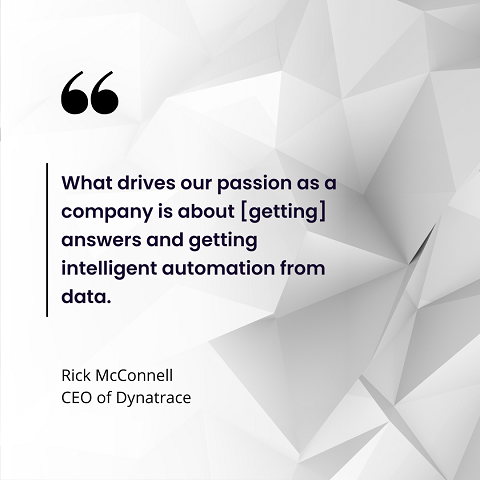Dynatrace Updates Observability Intelligence at Perform Conference
What do organizations need to do to improve cloud operations? At its Perform conference, Dynatrace provided a few ideas.

Dynatrace hosted its annualPerform conference Feb. 15-17, announcing a series of product and service updates designed to improve the state of cloud observability, security, and automation.
Dynatrace is a full-stack monitoring platform, providing IT andCloudOps professionals with observability and management capabilities. Among the announcements the company made at the event are:
AppEngine: Low-code technology to help organizations build data-driven apps for cloud observability, automation, and IT insights.
AutomationEngine: An artificial intelligence (AI)-powered tool to help organizations automate BizDevSecOps workflows to improve cloud utilization forecasts and service-level objectives (SLOs).
Carbon Impact App: Organizations can now get real-time insights of the carbon impact of their Dynatrace-monitored IT environments.
DevSecOps Lifecycle: Dynatrace is partnering with security vendor Snyk to scan workloads in preproduction to help identify potential security risks.
Grail data lakehouse extensions: TheDynatrace Grail data lakehousetechnology is being extended with new AI-powered graph analytics and improved metrics.
"We believe that the evolution of software to work perfectly is going to be around analytics, automation, AIOps, and the capabilities that we can provide to ensure that you have the technology to run your software effectively," Dynatrace CEO Rick McConnell said during his Perform keynote.
Dynatrace Updates Cloud Observability Options at Perform Conference
With automation a key focus for Dynatrace, the company expects that its new AppEngine will be the technology that helps make automation a reality for its users.
Dynatrace's platform already was providing organizations with cloud observability capabilities, but simply being able to observe what's going on in the cloud isn't enough for modern organizations to be successful at scale.

McConnell-Dynatrace
"It is undeniable that the cloud generates incredible bandwidth and enables us to produce applications and deliver infrastructure much faster than we can do on-premises," McConnell said. "But there's a downside."
The downside, according to McConnell, is that most CIOs say it's getting increasingly difficult to manually manage all of their cloud data. As such, the cloud is delivering an explosion of data, and it is making it more expensive for organizations to manage that wealth of data, he said.
"That is why we really need automation and observability to drive and address that issue," McConnell said.
Related: Observability vs. Monitoring: Who Needs Which When?
Dynatrace's AppEngine technology is an attempt to help organizations automate cloud observability. AppEngine enables users to build applications that make use of Dynatrace’s observability for specific workflows.
At launch, Dynatrace has built several AppEngine-based workflows that will be available to users, including:
Smartscape Health View: visualizations for application performance and security
Site Reliability Guardian: uses AppEngine to help automate and optimize cloud operation to maintain service-level objectives
AppEngine will also benefit from Dynatrace's new AutomationEngine, which provides the back-end capabilities to automate workflows driven by observability data.
“Combining precise, causal-AI answers from observability, security, and business data from production environments with automation provides a feedback loop that makes the automation more intelligent and business-value-oriented," stated Bernd Greifeneder, founder and chief technology officer at Dynatrace. "The Dynatrace AutomationEngine makes this a reality and pushes the industry one giant step toward a world where clouds run autonomously and software works perfectly."
Cloud Observability Data Lakehouse Data Gets New Graph Analytics Capabilities
Being able to collect data from different cloud providers and applications is where the Dynatrace Grail data lakehouse technology fits it. Launched in October 2022, Grail is being expanded with graph analytics capabilities.
According to Dynatrace, the graph analytics support enables a new range of customizable queries about operations. Among the examples cited by Dynatrace are:
Safeguarding customers and brands by conducting application security forensics to prevent, mitigate, and identify data breaches.
Boosting customer satisfaction and revenue by querying for e-commerce customers who have experienced service outage-related checkout issues.
Enhancing multicloud operations efficiency by predicting cloud performance and usage trends to optimize resource allocation based on user needs.
"What drives our passion as a company is about [getting] answers and getting intelligent automation from data," McConnell said.
About the Author(s)
You May Also Like




